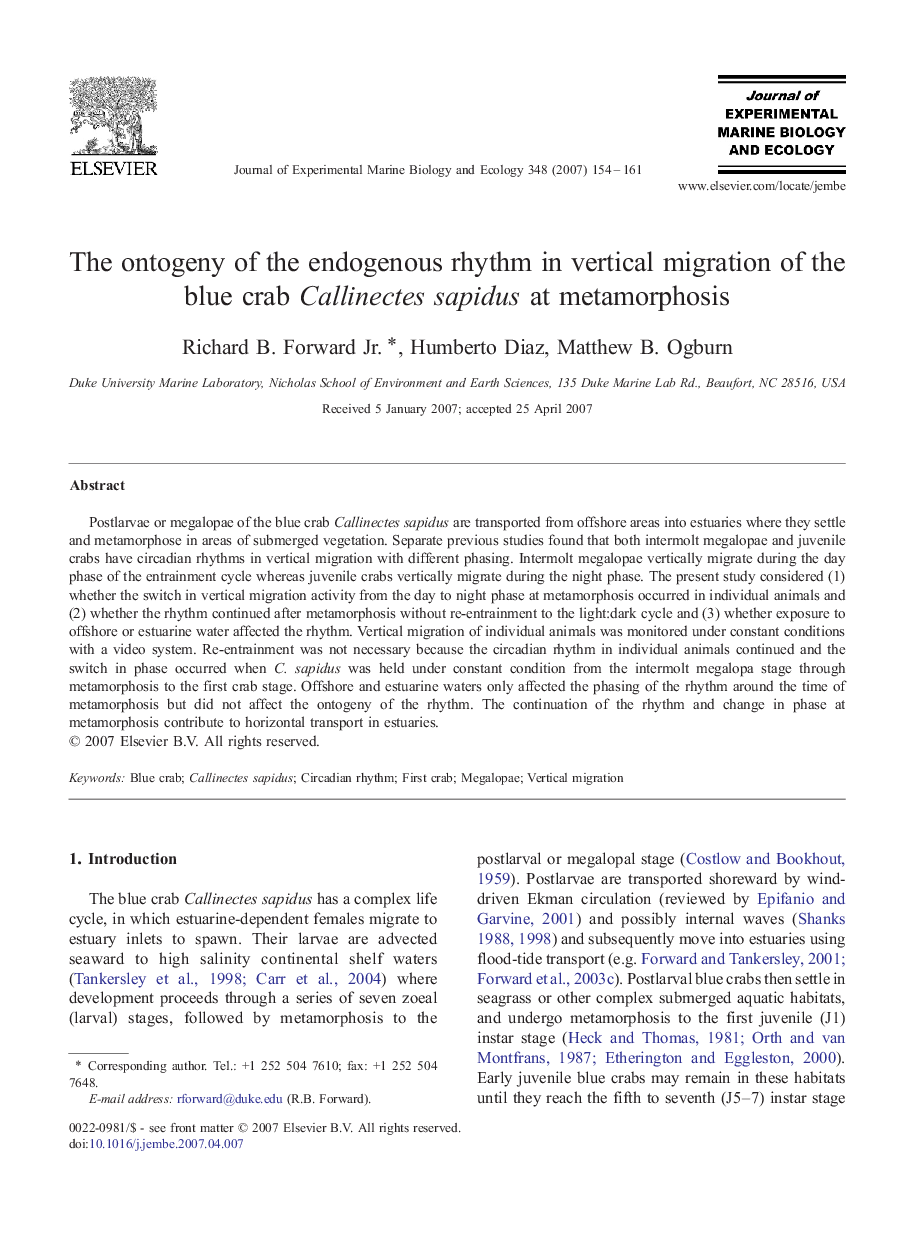| Article ID | Journal | Published Year | Pages | File Type |
|---|---|---|---|---|
| 4397636 | Journal of Experimental Marine Biology and Ecology | 2007 | 8 Pages |
Postlarvae or megalopae of the blue crab Callinectes sapidus are transported from offshore areas into estuaries where they settle and metamorphose in areas of submerged vegetation. Separate previous studies found that both intermolt megalopae and juvenile crabs have circadian rhythms in vertical migration with different phasing. Intermolt megalopae vertically migrate during the day phase of the entrainment cycle whereas juvenile crabs vertically migrate during the night phase. The present study considered (1) whether the switch in vertical migration activity from the day to night phase at metamorphosis occurred in individual animals and (2) whether the rhythm continued after metamorphosis without re-entrainment to the light:dark cycle and (3) whether exposure to offshore or estuarine water affected the rhythm. Vertical migration of individual animals was monitored under constant conditions with a video system. Re-entrainment was not necessary because the circadian rhythm in individual animals continued and the switch in phase occurred when C. sapidus was held under constant condition from the intermolt megalopa stage through metamorphosis to the first crab stage. Offshore and estuarine waters only affected the phasing of the rhythm around the time of metamorphosis but did not affect the ontogeny of the rhythm. The continuation of the rhythm and change in phase at metamorphosis contribute to horizontal transport in estuaries.
